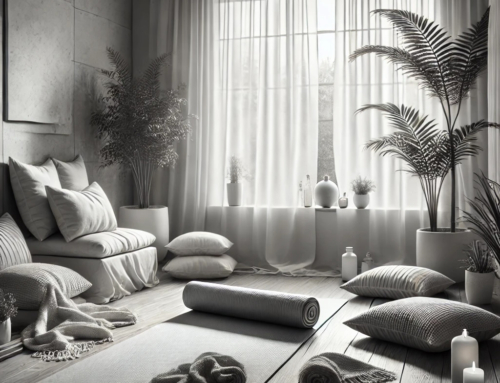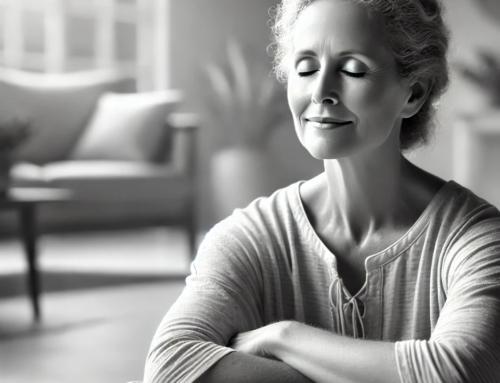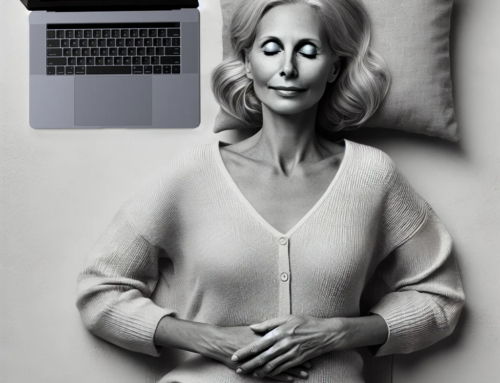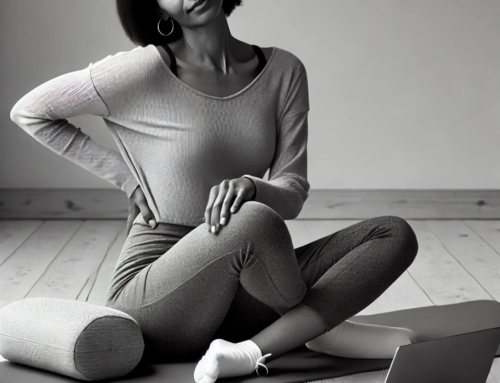How you move your body matters. Learn how every day movements can bring relief while living with chronic pain
Living with chronic pain is exhausting; it’s all-encompassing and all-consuming. It takes up a lot of space in life. We search to find relief in each moment. Flare-ups affect quality of life, mood (including the effects of anxiety and depression) and relationships. I dare say at times, it steals away our hopes and dreams, filling us with loss and despair. At least that’s how it felt for me, until I began the practice of turning towards my pain, instead of trying to avoid feeling it.
Mindful witnessing
At first, that concept of mindfully witnessing what I felt seemed impossible. It seemed like something I wasn’t strong enough to do. The pain was so loud, so big and bold; how could I sit with it? I had to feel this? No way. I feared feeling the pain would make it worse. I felt my body tighten and resist. But I had exhausted all other options. Having spent years addicted to opioids, I knew the route of suppression wasn’t an option anymore. I had made the choice to not numb or avoid, but the resistance to feeling something “bad” remained.
So that’s where I began. I set myself up, ready to go inward, ready to fully experience this message. I noticed the tightening and resisting of my mind, body and breath. So I took a breath with it. And I noticed. And I took another breath. I continued that way for the next few moments, bringing my attention to my breath. And it shifted, because I shifted. It softened, because I softened.
So I stayed. I went deeper. I sat in the safety of witness consciousness and breath. My mind quieted. My body relaxed. I felt the pain, fully. I found one area to tune into and felt. Nothing more. I felt and breathed and noticed the surrender of the resistance. I was curious about this experience through the body rather than the mind. I noticed the pain became quieter. And so I asked the pain what it was trying to tell me. I asked the pain for guidance. Clearly it was trying to get my attention, so I became still enough to listen.
Let the body be your guide
The body is always trying to speak with us, but we aren’t always listening.
The body has tremendous wisdom and it knows how to heal.
The body needs time and trust. Remember the last time you had a cut? Either you let it be or washed it, covered it and let it heal. The body did that. The body knew how to do that; how to repair itself. Now, pain—especially chronic pain—is more complex than a simple gash, but it contains the same intelligence. When we become curious about what we feel, without judgment or expectations, that’s when it shifts.
The more I sat witnessing the pain, the more I discovered that the resistance to the pain created more pain. The anxiety around feeling the pain created more pain. It was clear there were many layers to the pain. With time and attention, the layers began to unravel, spilling their secrets as I observed with full acceptance of what was. Sitting with myself became easier every time. Through guided imagery, I explored what the pain was trying to tell me. I listened.
Moving your body with a gentle curiosity and compassionate exploration
The fear shifted and I began to move again. Mindfully. Slowly. With focused awareness. With directed breath. With a gentle curiosity. With compassionate exploration, I let my body and the pain guide me, not only in my yogasana practice, but also with activities of daily living. I trusted. I gave it time. I found stillness. I listened and I honored what my body needed. I found myself checking in more and more and honoring myself in such a gentle, kind and sweet way. I knew which movements were too much or that I may have the energy now but I will pay for it later.
What’s leading you?
So I cared for myself and how I moved throughout the day as sweetly as I would care for a child. We each have the ability to witness in each moment what leads us. Is it self-loathing? Fear? Or compassion and acceptance? I have walked down the path of self-loathing too many times. I know where those roads lead. I needed a shift. This was that shift I was seeking.
Through practice, I no longer resented the pain but instead tuned into its wisdom and honored what it had to say. I let it be okay that I had pain and knew I didn’t do anything wrong. Having pain didn’t mean I was this or that or any other negative story my mind wanted to create.
Things got better the more I chose differently. Sure, I still had ups and downs because life isn’t sunshine and rainbows. And don’t believe anyone who tells you it is! This is hard work, expanding awareness, but it is immensely worth it! Would we want to live in a world where there was no adversity to inspire creativity and more conscious states of being?
Life has so much more meaning and depth with the pain, the sorrow, the joy and the relief.
Using our physical, mental-emotional or spiritual pain as a guide and honoring what it needs
We can make space for it all and the even the tiniest slivers of light will shine through. When we create space, intuitive healing guides the way. When we feel both ends of the emotional spectrum, we allow the flow that all of life is; that being human is. Then life works with us, not against us. And when we use our physical, mental-emotional or spiritual pain as a guide and honor what it needs, we get a glimpse of the relief we’re so desperately seeking. When we have awareness, we have choice. And in that choice lies our power over chronic pain.
How do we cultivate more awareness?
Begin by noticing throughout your day:
- How do you get in and out of bed? Notice how you move your body. Then, try this: sit on the side of the bed. Lie down on your side and lift your legs up. Then roll on back. Give yourself permission to move slow. Follow the reverse to get out of bed.
- How do you get down and up off the floor (if you do)? Notice how you transition. Then, try this to come down: have a chair or table nearby and bring one knee down to the earth. Then bring the hands to earth so you are on hands and knees. Sit one hip down then swing the legs out. If you want to get on to your back, ease on to your side, then slowly on to your back. Follow the reverse to get back up to seated and to standing.
- How do you sit? Notice if your hips are higher or lower than your knees. Then, try this: sit on a blanket or pillow to prop your hips higher than the knees to prevent rounded back in the spine. This is extremely helpful for chronic low back pain.
Work with me
I teach private, one-on-one therapeutic, gentle, restorative yoga therapy sessions in-person in Southington, CT or online via Zoom.
Book your session
Learn more about yoga therapy





